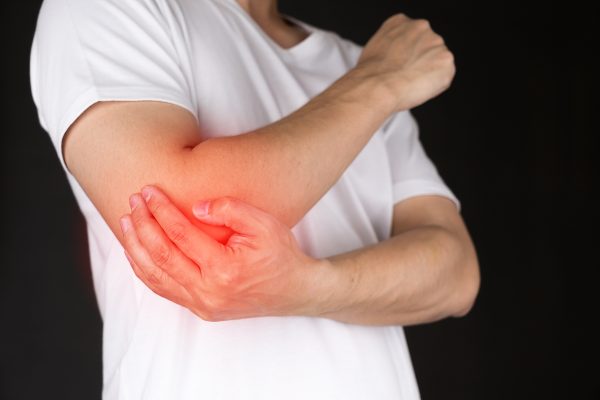Top 5 Treatments for Bursitis or Inflammation of the Bursa
Your joints and tendons are cushioned by fluid-filled sacs called bursae. Your body contains over 150 of these sacs, which reduce friction between adjoining structures to prevent injury and to make movement easier. However, overuse can sometimes result in problems: Repetitive motions or positions can cause inflammation of the bursa, resulting in a painful condition called bursitis.

Bursitis | Inflammation of the Bursa
Certain factors make you more likely to develop bursitis. The wear and tear that accompanies aging can cause your bursae to degrade. Sometimes occupations or hobbies, such as certain trades, sports and activities like gardening, put you at risk for inflammation of the bursa because of repetitive motion or pressure. Medical conditions including gout and diabetes are sometimes linked with bursitis. Ask your arthritis pain doctor if some of your discomfort could be from inflamed bursae.
Can you prevent bursitis? Your knee pain doctor will recommend taking steps to prevent inflammation of the bursa, such as using padding when kneeling, employing proper technique when lifting and taking frequent breaks. Maintaining a healthy weight as well as regular exercise with a proper warm up and stretching also help.
Even with preventative measures you may still end up with bursitis. Fortunately, there is treatment available. Your knee and back pain doctor New Jersey can help you choose between the top 5 treatment options.
1. Rest and ice
Rest and ice work together to reduce bursitis pain. When you move an affected area, such as circling or raising the arm of a sore shoulder, you risk irritating and increasing the inflammation of the bursa. Avoid putting pressure on the inflamed area and immobilize it if you can using a tensor bandage or sling. Movement is important to restore functionality but only after the injured area has a chance to rest.
Ice provides the dual benefit of decreasing inflammation while reducing pain. Make sure you have a layer of fabric between the ice and your skin and apply the compress for no longer than 15 minutes at a time unless otherwise directed by your shoulder pain doctor.
2. Medications
Medication is another treatment that reduces the pain caused by inflammation of the bursa. Try an over the counter non-steroidal anti-inflammatory drug (NSAID) such as ibuprofen (Advil) or naproxen (Aleve). Rest, ice and OTC medication should work within a couple of weeks and if they haven’t, it’s time to see a pain doctor.
3. Injections
A bursal injection treats pain and inflammation with corticosteroids deposited directly into the bursa using a fine needle guided by an ultrasound image. Injections can be done in many locations but the most common are shoulder and hip. Ask your back pain doctor about this option since pain from hip bursitis sometimes radiates to the lower back.
Injection is superior than other routes of delivery for corticosteroids because the therapy can be targeted to specific tissue, enabling the pain doctor to use a smaller dose while still achieving the desired results. Bursa injections are beneficial for both treatment and diagnostic use: they improve your comfort if bursitis is causing your pain, and if there is no change to your condition after an injection this means that bursitis may not have been the culprit after all.
When bursitis is the cause and injection therapy does work, the efficacy can be permanent. Sometimes an injection will wear off requiring a follow up treatment several months later, but in some cases, one injection is all you need.
4. Physical therapy
One of the goals of physical therapy is to prevent new inflammation of the bursa. This means that targeted exercises can help you recover from existing inflammation by changing the way you move to prevent the inflammation from continuing or worsening.
This is achieved by increasing strength and flexibility in the areas surrounding the joints, which provides stability. A joint with stability is one that is less likely to end up with stressed and then inflamed bursae.
Consider a runner, who experiences pounding on the knees and hips with every step. Weaker musculature means the runner’s joints and bursae experience more agitation with each stride. However if the runner has invested time in building thigh and core strength, this stabilizes the hip and knee joints which protects the bursae from irritation and wear.
5. Surgery
When other options haven’t produced the results you’re looking for, your pain doctor may suggest surgical removal of the bursa. During the procedure doctors may also remove bone and bone spurs to make more room for tendon movement. Ask about the less invasive arthroscopic version of this surgery that results in smaller incisions and has a faster and less painful recovery.
Another surgical option is bursa drainage, in which the surgeon leaves the bursa in its place and drains excess fluid from it through an incision in the skin. This is done if the damage to the bursa is minimal and complete removal is not indicated.
Key Concepts
Bursitis, or inflammation of the bursa, can be painful and debilitating without treatment. Fortunately, there are treatment options available if you develop inflamed bursa. To ease your discomfort and resume your previous quality of life, get help from the best pain doctor in New York for your inflammation of the bursa.






